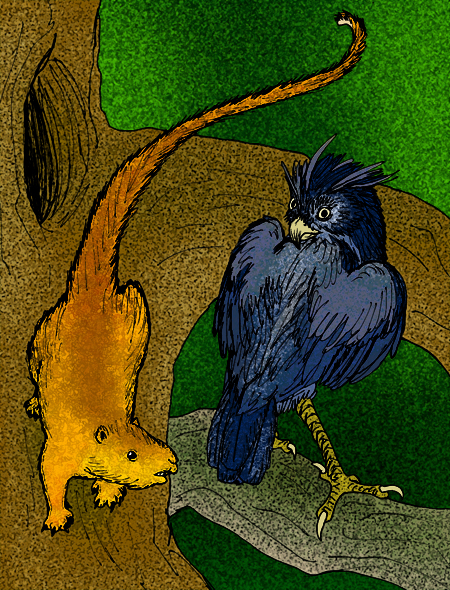Ailuravus on:
[Wikipedia]
[Google]
[Amazon]
 ''Ailuravus'' is a genus of prehistoric rodents in the family Ischyromyidae.
''Ailuravus'' is a genus of prehistoric rodents in the family Ischyromyidae.
 ''Ailuravus macrurus'' ("big-tailed cat-ancestor") was a primitive,
''Ailuravus macrurus'' ("big-tailed cat-ancestor") was a primitive,
 ''Ailuravus'' is a genus of prehistoric rodents in the family Ischyromyidae.
''Ailuravus'' is a genus of prehistoric rodents in the family Ischyromyidae.
''Ailuravus macrurus''
squirrel
Squirrels are members of the family Sciuridae (), a family that includes small or medium-sized rodents. The squirrel family includes tree squirrels, ground squirrels (including chipmunks and prairie dogs, among others), and flying squirrel ...
-like rodent, one of the earliest known rodents, from the Messel pit
The Messel Formation is a Formation (geology), geologic formation in Hesse, central Germany, dating back to the Eocene Epoch (geology), epoch (about 47 Ma). Its geographic range is restricted to the Messel pit. There it unconformably overlie ...
Lagerstätte
A Fossil-Lagerstätte (, from ''Lager'' 'storage, lair' '' Stätte'' 'place'; plural ''Lagerstätten'') is a sedimentary deposit that preserves an exceptionally high amount of palaeontological information. ''Konzentrat-Lagerstätten'' preserv ...
, in Germany
Germany, officially the Federal Republic of Germany, is a country in Central Europe. It lies between the Baltic Sea and the North Sea to the north and the Alps to the south. Its sixteen States of Germany, constituent states have a total popu ...
. It lived during the Eocene
The Eocene ( ) is a geological epoch (geology), epoch that lasted from about 56 to 33.9 million years ago (Ma). It is the second epoch of the Paleogene Period (geology), Period in the modern Cenozoic Era (geology), Era. The name ''Eocene'' comes ...
period of Europe, in forests, and may have been arboreal. Furthermore, this species was discovered to have inhabited South Asia, specifically India. This was found through the comparison of the teeth found from each organism from both places. Due to this discovery, there is thought to be a connection between South Asia and Europe before they were separated and shifted into continents.
In India, ''Ailuravus macrurus'' are thought to have inhabited the Cambay Basin, so they most likely preferred to live near aquatic regions along with fish species.References
* * * Rana, R. S., Kumar, K., Escarguel, G., Sahni, A., Rose, K. D., Smith, T., Singh, H., & Singh, L. (2008). An ailuravine rodent from the lower eocene cambay formation at vastan, western india, and its palaeobiogeographic implications. Acta Palaeontologica Polonica Eocene rodents Prehistoric mammals of Europe Fossil taxa described in 1891 Prehistoric rodent genera {{paleo-rodent-stub